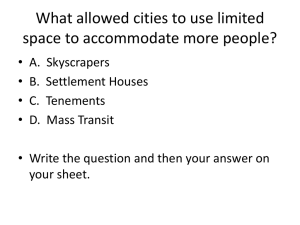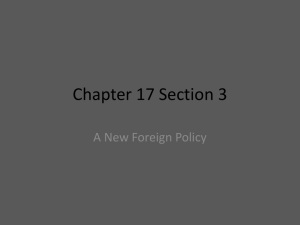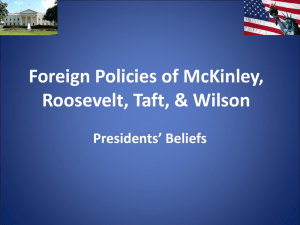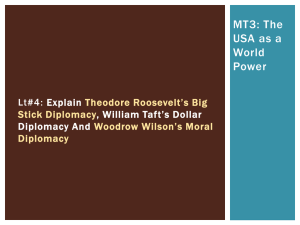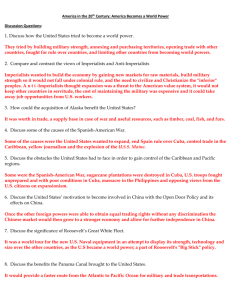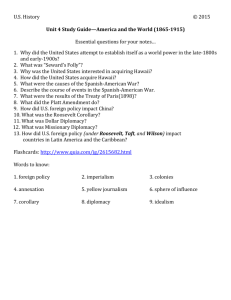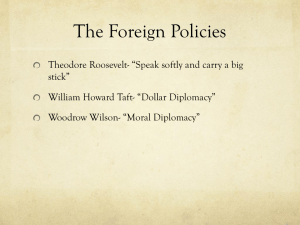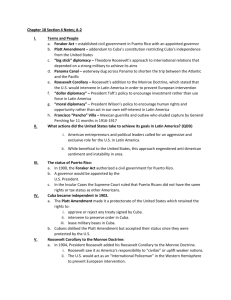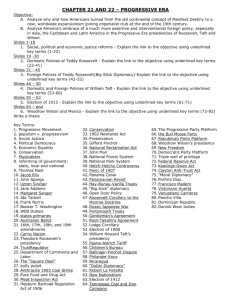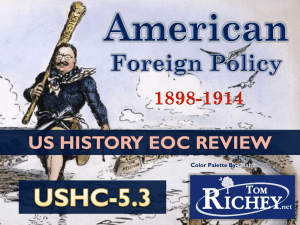Roosevelt Corollary and Dollar Diplomacy
advertisement
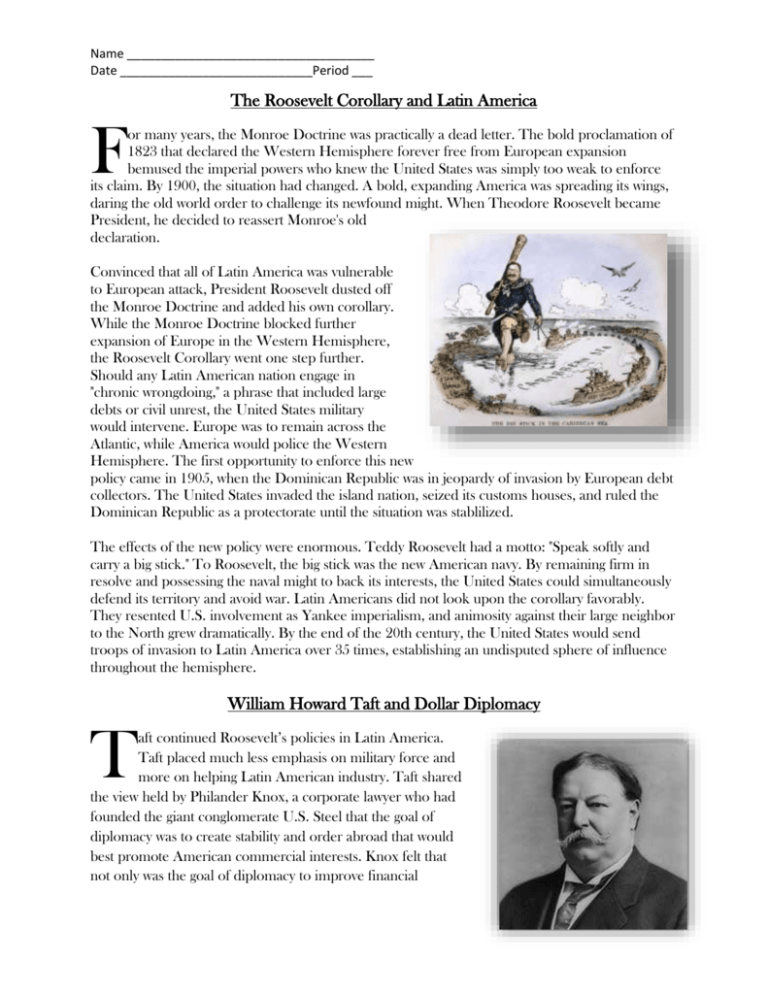
Name ____________________________________ Date ____________________________Period ___ The Roosevelt Corollary and Latin America F or many years, the Monroe Doctrine was practically a dead letter. The bold proclamation of 1823 that declared the Western Hemisphere forever free from European expansion bemused the imperial powers who knew the United States was simply too weak to enforce its claim. By 1900, the situation had changed. A bold, expanding America was spreading its wings, daring the old world order to challenge its newfound might. When Theodore Roosevelt became President, he decided to reassert Monroe's old declaration. Convinced that all of Latin America was vulnerable to European attack, President Roosevelt dusted off the Monroe Doctrine and added his own corollary. While the Monroe Doctrine blocked further expansion of Europe in the Western Hemisphere, the Roosevelt Corollary went one step further. Should any Latin American nation engage in "chronic wrongdoing," a phrase that included large debts or civil unrest, the United States military would intervene. Europe was to remain across the Atlantic, while America would police the Western Hemisphere. The first opportunity to enforce this new policy came in 1905, when the Dominican Republic was in jeopardy of invasion by European debt collectors. The United States invaded the island nation, seized its customs houses, and ruled the Dominican Republic as a protectorate until the situation was stablilized. The effects of the new policy were enormous. Teddy Roosevelt had a motto: "Speak softly and carry a big stick." To Roosevelt, the big stick was the new American navy. By remaining firm in resolve and possessing the naval might to back its interests, the United States could simultaneously defend its territory and avoid war. Latin Americans did not look upon the corollary favorably. They resented U.S. involvement as Yankee imperialism, and animosity against their large neighbor to the North grew dramatically. By the end of the 20th century, the United States would send troops of invasion to Latin America over 35 times, establishing an undisputed sphere of influence throughout the hemisphere. William Howard Taft and Dollar Diplomacy T aft continued Roosevelt’s policies in Latin America. Taft placed much less emphasis on military force and more on helping Latin American industry. Taft shared the view held by Philander Knox, a corporate lawyer who had founded the giant conglomerate U.S. Steel that the goal of diplomacy was to create stability and order abroad that would best promote American commercial interests. Knox felt that not only was the goal of diplomacy to improve financial Name ____________________________________ Date ____________________________Period ___ opportunities, but also to use private capital to further U.S. interests overseas. “Dollar diplomacy” was evident in extensive U.S. interventions in the Caribbean and Central America, especially in measures undertaken to safeguard American financial interests in the region. Taft and Knox used 'Dollar Diplomacy' in the Dominican Republic, Nicaragua, Guatemala, and Colombia. 'Dollar Diplomacy' was also used to aid the stability of Caribbean countries such as in Honduras and Haiti. By using Dollar Diplomacy Taft attempted to extend the American sphere of influence in China and also to Liberia in West Africa. In China, Knox secured the entry of an American banking conglomerate, headed by J.P. Morgan, into a European-financed consortium financing the construction of a railway from Huguang to Canton. Taft believed that once the US increased commerce with Latin America and Asia, American businesses would increase their profits, and countries in Latin America would rise out of poverty and social disorder. In spite of some successes, “dollar diplomacy” failed to counteract economic instability and the tide of revolution in places like Mexico, the Dominican Republic, Nicaragua, and China. Directions: Answer the following questions from the excerpts on The Roosevelt Corollary and Dollar Diplomacy. 1. What did the Monroe Doctrine state in 1823? 2. What did President Theodore Roosevelt add to the Monroe Doctrine? 3. What did Theodore Roosevelt’s motto, “Speak softly and carry a big stick,” mean? 4. According to Taft and Knox, what was the goal of diplomacy? 5. Where did Taft use “Dollar Diplomacy?” 6. What were Taft’s beliefs about dollar diplomacy? How successful was dollar diplomacy?
